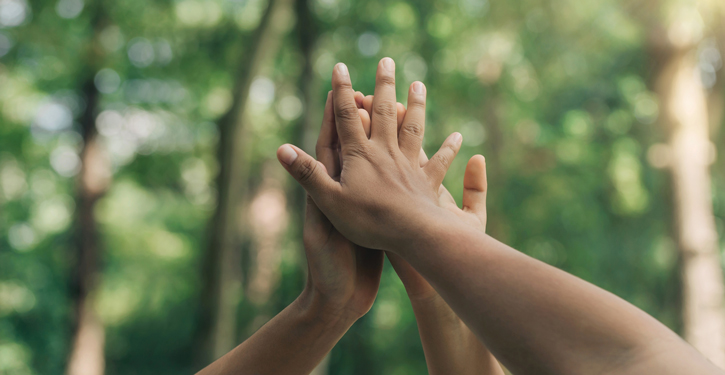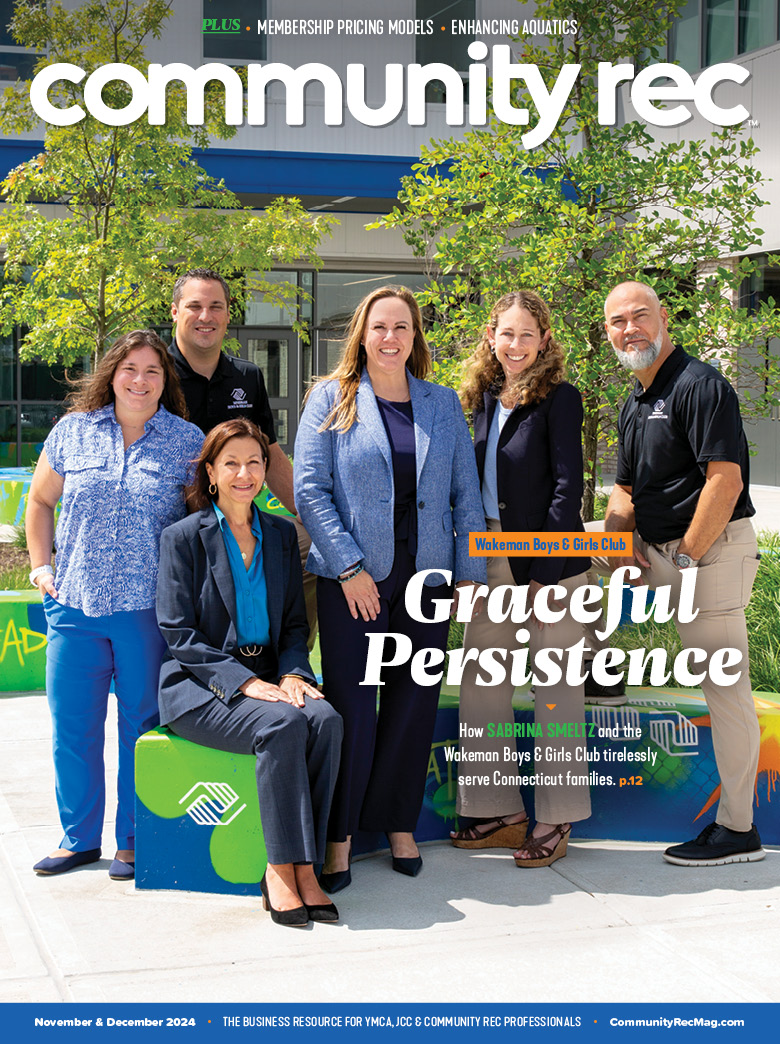Industry leaders share how collaborations with other organizations empower their communities.
Collaborations with community organizations is a great way to increase your impact on your members and strengthen connection. Kate Yates, the ForeverWell Program director at the YMCA of the Fox Cities in Appleton, Wisconsin, emphasized the impact of bringing in outside speakers or businesses to discuss subjects pertinent to your members.
Yates will often have visitors come to her office asking for organization or expert recommendations on various subjects. However, when these problems affect a group of members, she noted it’s more beneficial to have them come to the Y versus sending members to find a resource on their own.
“This is already an established place in the community they trust,” said Yates. “We’ve taken so much time to create a safe space and a sense of community and belonging. It’s really important to take advantage of some of these opportunities to truly provide other experiences for our members, especially in areas we may not be experts in.”
By bringing in third party organizations, attendees learn valuable information from experts, the visiting speakers or businesses gain connections with the Y’s members, and the YMCA gains credibility and strengthens relationships from both sides.
A specific example of a community collaboration is the Y’s Conversations with a Cop program. Police officers are invited to come to different locations and speak on general safety topics. Attendees learn about the presented subject and connect with a local police officer who can answer questions about a range of personal concerns.
“There’s often a stigma with the police, and people don’t always feel comfortable or welcomed depending on what they’re going through,” said Yates. “It’s about hosting an opportunity for people to already be in a place where they feel safe and have folks come to them. Having these programs at the Y makes it more accessible, friendly and community-based.”
This is just one of the many partnerships Yates has overseen. Besides safety, other partnerships at the Y focus on leisure, lifestyle habits and health.
Collaborations with a focus on health can be particularly beneficial because rec centers are already typically thought of as fitness and wellness hubs. Adding other amenities and having strong relationships with local health care providers shows members you’re truly committed to being a part of their lives.
One organization that has seen this first-hand is the JCC of Greater Baltimore. For over the past 10 years, the J has been collaborating with LifeBridge Health, a local health care provider in the community.
LifeBridge looks to get into population health and community medicine to promote healthy lifestyles before a hospital visit is needed. This holistic well-being focus is also what the J wants to provide its members.
A big piece of the partnership are the two community health professionals from LifeBridge who work out of the two JCC locations. They see members, provide medical advice, help them get into doctor appointments quicker, host programming with the J’s staff and can help perform health screenings.
“I think our members get a lot of value out of these community health programs in terms of helping them be safe,” said Paul Lurie, the chief operating officer at the JCC of Greater Baltimore. “Working with a health system enables us to bring components of holistic wellness where they have the expertise to have these conversations with our members. The JCC feels like a much better place to build community and meet people rather than a hospital basement.”
Lurie emphasized how the partnership benefits both entities in other ways as well. LifeBridge’s services and mission is marketed to all members. Plus, advertising the collaboration and having LifeBridge be the official medical partner of the JCC brings in some revenue to the organization.
Having a strong relationship with a medical entity also helped during the COVID-19 pandemic. JCC leadership could consult LifeBridge’s health experts when creating protocols.
This successful collaboration has grown in the past 10 years and has taken a lot of effort to become what it is today. Intentional goal setting and patience were Lurie’s big takeaways from his experience working with LifeBridge.
“It’s not just a program; it’s a relationship,” said Lurie. “It’s about the people you’re working with, and it takes time to build those relationships with your partner. Those are what make a collaboration successful or not.”
Another community rec organization partnering with a local health care system is Columbus Parks and Rec in Columbus, Indiana. The organization has literally built its collaboration with Columbus Regional Health (CRH), a local hospital, from the ground up with the facility development of the joint-campus, NexusPark.
“The buildings are so much more than just a building,” said Mark Jones, the director of Columbus Parks and Recreation. “NexusPark is a place where individuals, families and visitors come together in a space to enhance the quality of life for the community.”
The 35-acre campus will feature an indoor sports fieldhouse, parks and rec administrative and programming spaces, CRH medical and wellness offices, and other shops and areas for the general public to enjoy. Besides sharing the campus, the two main entities are also looking to partner in other ways.
A new part of campus — and something the Columbus Parks and Rec department had never dove deep into before — is fitness. There will be small group training opportunities and personalized workouts designed to help participants achieve individual goals. The hope is to bring CRH into this area by offering biometric data where a health care professional will examine bloodwork before and after a workout.
“This fitness component allows us to make sure we’re having a positive impact on your health,” said Jordan Bunch, the fitness, health and wellness manager at Columbus Parks and Rec. “Most adults just want to feel better and do things easier. We want to be able to provide this through fitness and see the benefits on the ground of our community.”
Another piece of the Columbus Parks and Rec’s side of campus will be a new teaching kitchen. The department plans on working with CRH to create sessions focusing on nutrition and health.
“This is going to be very transformational for the community,” said Jones. “I’ve been a part of different department projects, and this is probably one of them that’s been the most positive in the community.”
Not only is NexusPark creating more opportunities for community engagement, but many new doors have opened for the Columbus Parks and Rec department as well.
Nikki Murphy, the associate director of recreation, noted how the new facility is leading growth in the department. She emphasized how new spaces allow for new opportunities to better serve the community.
“We have all of these spaces now, and we want to make sure we’re using them in our partner programming,” said Murphy. “We’ve had a basic partnership with CRH, but now it’s ballooned into all these opportunities. We’re able to implement them and put them in place because of NexusPark.”
It seems successful collaborations can take many shapes and forms. But most importantly, they can be a great way to deviate from traditional programming and strengthen relationships within your community.










